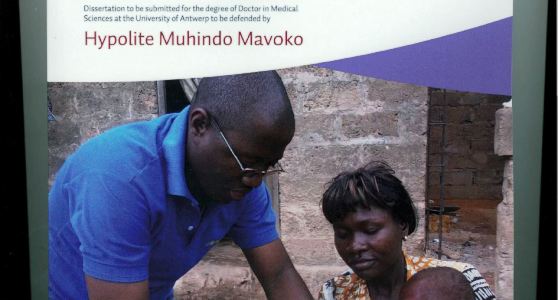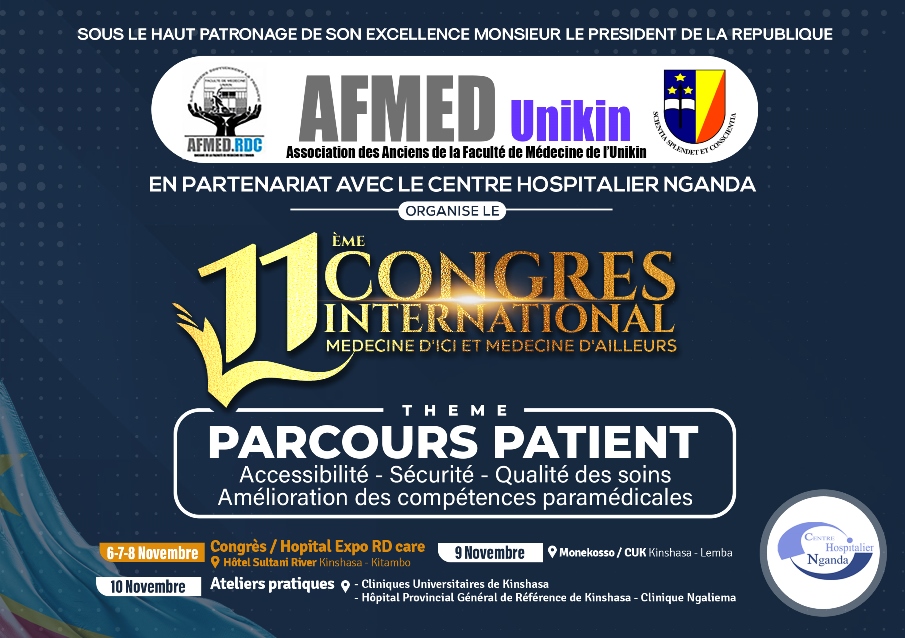
Dissertation to be submitted for the degree of Doctor in Medical
Sciences at the University of Antwerp to be defended by Hypolite Muhindo Mavoko
Promotors
Prof. Dr. Jean-Pierre Van geertruyden
Prof. Dr. Pascal Lutumba
Department of Tropical Medicine
University of Kinshasa, Democratie Republic of the Congo
Facult~of Medicine and Health Sciences
Antwerp 2016
Summary
Background and rationale
Despite a reduction in the incidence over the last decade, malaria remains a major problem of
public health, with 214 million cases and 438,000 deaths occurring yearly. Sub-Saharan Africa
is the most affected region, where 90% of deaths are accounted. Malaria control was hindered
by the spread of resistance of Plasmodium falciparum to chloroquine and sulfadoxinepyrimethamin,
the most available and affordable antimalarial drugs at that time. An
overtreatment resulted from prescribing those antimalarials without laboratory confirmation
and contributed to the selection and spread ofresistant strains. As a response to that situation,
the World Health Organization (WHO) recommended the use of effective but expensive
Artemisin-based Combination Therapies (ACTs) for fust-line treatment of uncomplicated
malaria cases. Further, are ail National Malaria Control Programs (NMCP) recommended to
change the treatment guidelines when the efficacy of the recommended antimalarial drugs is
below 90%. Therefore, a regular monitoring of the efficacy is paramount. ln addition, the
confirmation of the diagnosis was meant to be mandatory prior prescription of ACTs. ln case
oftreatment failure, a rescue treatment either an alternative ACT or a quinine+antibiotic with
antiplasmodial properties is recommended since 2010. However, in the field reality, patients
are, for several reasons, often retreated with the same fust-line medication, without clear
evidence on the efficacy and safety. Furthermore, the implementation of malaria policies may
be challenging in the field, especially at community and primary health care level (PRC).
Objectives
Our main objective was to contribute to the improvement of malaria diagnosis and treatment
at the PHC. Our specifie objectives were: a) to assess the accuracy of malaria diagnosis at PHC
in Kinshasa, the Democratie Republic of Congo (DRC); b) to describe an innovative diagnostic
tool with a potential to detect malaria infection and assess its accuracy under experimental laboratory conditions as weil as in field conditions; c) to assess the discrepancy between
malaria policies and practices at PRC in Kinshasa, the DRC; d) to describe the clinical malaria
features, update the efficacy ofartesunate-amodiaquine (ASAQ) and assess their relation with
the multipl icity of infection in DRC; e) to assess the efficacy and safety of retreatment with the
same ACT compared to recommended rescue treatments; t) to assess the impact of repeated
malaria attacks on children ‘s health and persistence of recrudescent Plasmodium falciparum
strains.
Design and methods
Between 2011 and 2014, we conducted studies in DRC and Uganda, both accounted among
highly malarious countries in Africa. A cross-sectional design allowed to assess at PHC the
accuracy of malaria diagnosis and to describe the discrepancies between malaria policies and
the field reality. The development and assessment ofthe accuracy of the new malaria diagnostic
deviee (multi-angle light scattering spectroscopy, MALS technique) implied in vitro and in
vivo assessments. The randomized, open label, 3-arm clinical trial was embedded in a cascadecohort
study (with assessments before and after the randomized clinical trial), where children
with uncomplicated malaria were treated, fol\owed up and retreated until they remained malaria
parasite-free for four weeks after the last treatment.
Major findings
Malaria diagnosis
We found that RDTs are more reliable than microscopy in the diagnosis of malaria at PHC.
More precisely, compared to the result of expert microscopists, half of patientswith positive
result of microscopy were false positive (50.9%), while for RDTs it was 3.0% and 8.3%.
Furthermore, we described a proof of concept of the MALS technique, a potential future
malaria diagnostic tool. The assessment of accuracy under experimentallaboratory conditions
showed a sensitivity of 62.2% and a specificity of 100%. In field circumstances, the accuracy was low with a sensitivity and specificity of 47.1 % and 51.1 % respectively. An optimization
ofthis technique is required in order to overcome potential confounding factors and technical
constraints.
Malaria cases management
ln the first study, testing the accuracy of RDTs and microscopy, we additionally assessed the
patients’ seeking behavior and health practitioners’ practices. We observed that most patients
(66.2%) attend the health facility (HF) after 2 to 3 days of fever onset. Fifty five percent of
patients start with self-medication before attending the HF. On the health practitioners’ side,
only 45.7% ofpatients were managed in line with malaria policies, meaning to prescribe ACTs
to malaria positive patients and no antirnalarials to those who were tested negative.
Efficacy of artesunate-amodiaquine (ASAQ) and its impact on the multiplicity of
infection
ASAQ has been recommended in DRC as first-line malaria treatment in 2005. Our assessment
revealed a PCR-adjusted adequate c1inical and parasitological response (ACPR) of 92.8%
(95% cr: 91.0-94.6). Polyclonal Plasmodium falciparum infections were predominant at
recruitment as weil as on the day offailure. No recrudescence was reported in patients infected
with a single haplotype of P. falciparum. However, the risk of recrudescence in those infected
with polyclonal infection was 28%.
Uncomplicated malaria rescue treatment
571 children aged from 12 to 59 months were enrolled in a randomized, open label, three-arm
clinical trial that aimed to assess efficacy and safety of retreatment of uncomplicated clinical
failures with the first-line ACT, as compared to other rescue treatments. The PCR corrected
ACPR was 91.4% (95% cr: 87.5-95.2),91.3% (95% CI: 87.4-95.1) and 89.5% (95% CI: 83.0-
96.0) respectively in the group retreated with the same ACT, the alternative ACT and Qne.
The estimates for rates of malaria recrudescence in the three treatment arms were similar (Log rank test: X2= 0·22, p = 0·89). The group assigned to alternative ACT experienced less drugrelated
adverse events (p<O.OOl). ACTs (either retreatment with the first line ACT or an
alternative ACT), are suitable for malaria rescue treatment.
Dynamics of Plasmodium falciparum haplotypes over treatment courses
The recruitment in the Quinact study was lower than expected but the proportion of recurrent
malaria was relatively high. The prolonged analysis indicated persistent recrudescences, over
seve rai treatment courses, which may contribute to the selection of resistant strains. This was
observed regardless of the chosen rescue treatment.
Conclusion and perspectives for future research
The health system needs to be strengthened, with a focus at PHC, for implementation ofmalaria
control strategies. Since RDTs are more accurate than microscopy on the field, the y should be
preferred and! or microscopist be permanently trained. ASAQ efficacy was found to be above
the required threshold in Kinshasa. Furthermore, the efficacy ofretreatment with the same ACT
was similar to the recommended rescue treatments. However, ACTs constitute the better option
for rescue treatment.
This analysis indicated a small group of children at high risk for subsequent malaria attacks.
This group likely contributes on the community-level, heavily to the burden ofthe disease. The
risk factors for this increased vulnerability should be assessed in ail the aspects of the
epidemiological triangle (host, environment and agent). ln addition, the identification of
malaria hotspots and focusing prevention strategies in that group may have optimal impact on
reducing the burden of the disease in a community.
20









